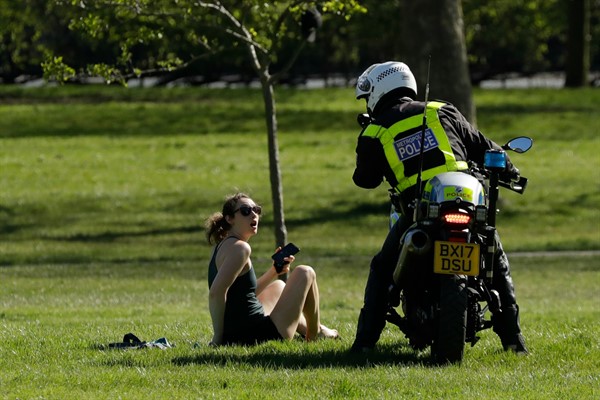For as long as there have been governments, pandemics have been occasions for the exercise of greater muscle by the state. In the case of COVID-19, that muscle has predominantly been the police. From the initial outbreak and first mass quarantine in the central Chinese city of Wuhan to the lockdowns around the globe today, national leaders and local officials alike have called on their police to play a new set of roles and enforce a new set of rules. What’s gone well and what’s gone badly? What’s been learned? And what’s next?
Before examining any actual policing, it is important to understand that police officers are getting sick and dying in great numbers, so police agencies are coping with their own trauma and operating with significant reductions in force. In Wuhan, where the lockdown was lifted in early April, government figures showed that twice as many police officers died than health workers during the city’s fight against the coronavirus. In New York City, 37 members of the police department had died from COVID-19 as of April 25, and over 7,000 officers were out sick at the peak of the outbreak in mid-April.
In every jurisdiction, the choices facing governments about how to use their police in this moment fall into five major categories: Enforcing lockdowns; finding alternatives to arrest and detention for crime suspects; supporting health care workers; dealing with new crimes, like sales of counterfeit medical and protective equipment; and policing information online, especially in countries where it is criminal to insult the government or spur social unrest.

